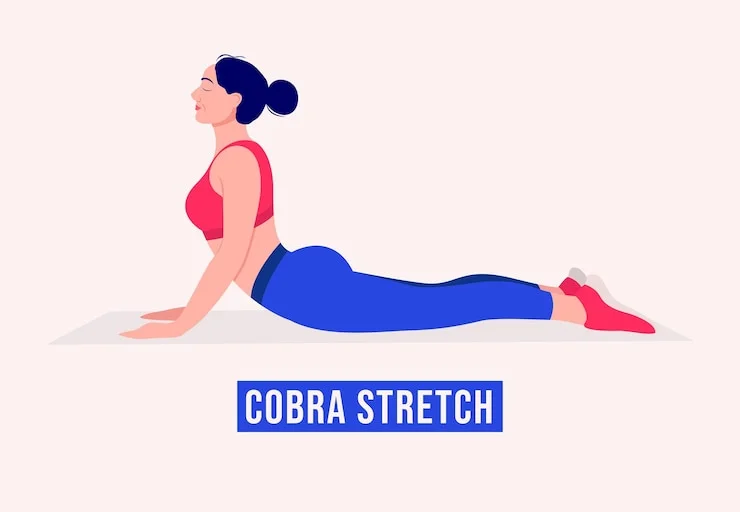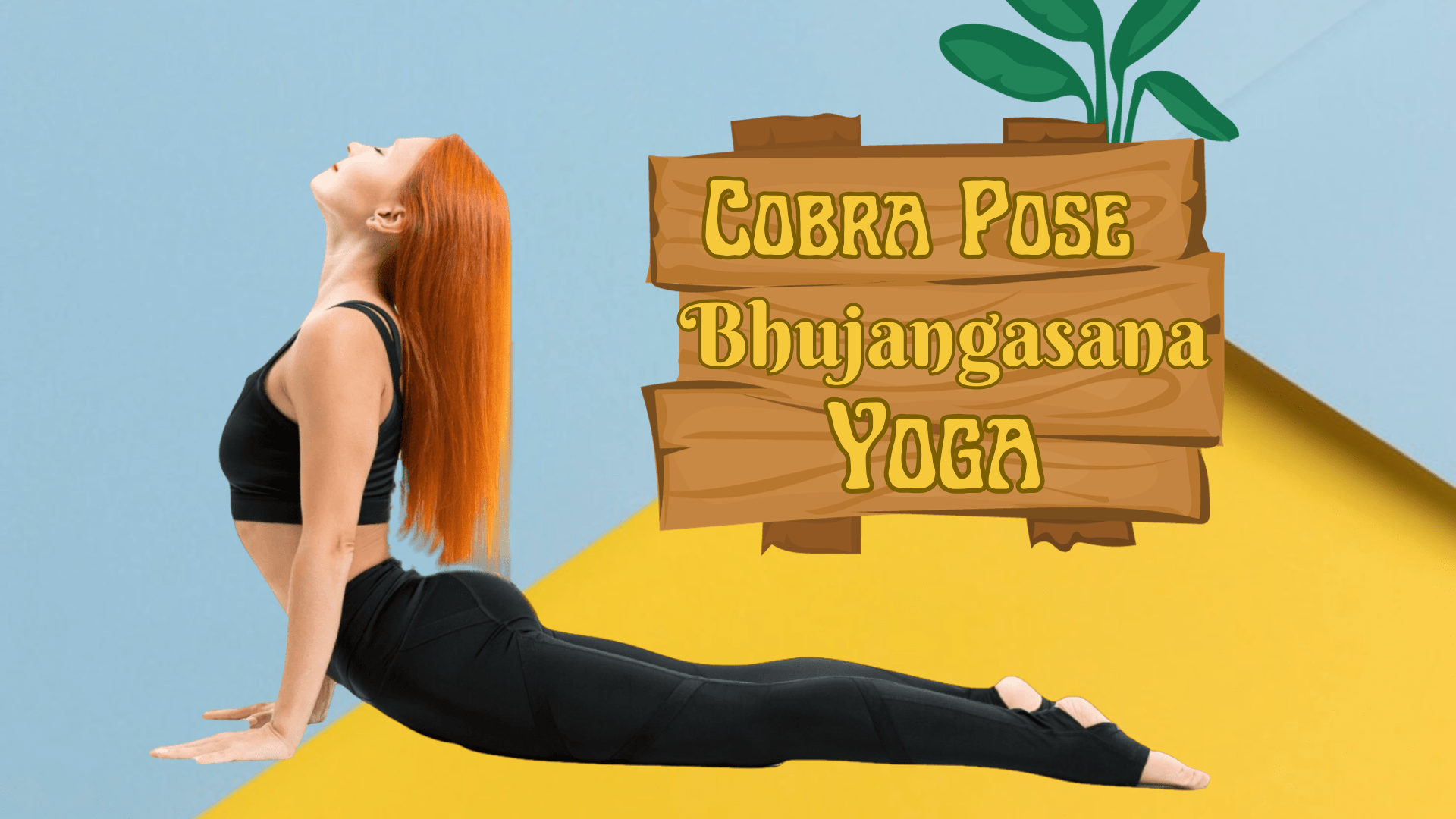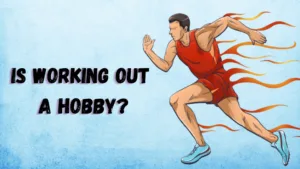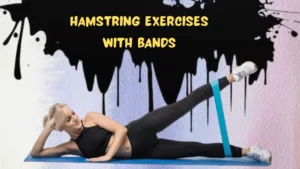The Baby Cobra pose is often included as part of the Surya Namaskar sequence. It serves as an alternative to the Upward Facing Dog (Urdhva Mukha Svanasana) for beginners in the arrangement of yoga postures. However, it is not only a gentle introduction for beginners but also a full backbend on its own. Therefore, it is advisable to allocate some time specifically to work on this pose.
The Cobra sometimes referred to as the Baby Cobra when the arms are bent, can transform into a full Cobra if you straighten your arms. But be mindful not to rush into the full pose; progression should be gradual.
In this asana, the chest is lifted while the palms remain on the mat, and the back arches gracefully. It not only strengthens the spine but also opens up the chest, promoting flexibility. Incorporating the Baby Cobra into your yoga practice can be a step toward mastering more advanced backends.

Remember, patience is key when exploring this pose. Focus on the alignment, engage your core, and allow your breath to guide the movement. As you become more comfortable with the Baby Cobra, you may gradually extend into the full Cobra, experiencing the holistic benefits of this refreshing yoga posture.
How to Do the Cobra Pose
- If you’re in the midst of your Sun Salutation sequence, you’ll seamlessly transition into Cobra, engaging your knees, chest, and thighs with the ground. If not, you can start by lying flat on your belly.
- Place your palms directly under your shoulders, keeping them flat on the ground. Bend your elbows straight back and snug them against your sides. Pause for a moment and, while keeping your neck in a neutral position, gaze straight ahead at your mat.
- Press your pelvic bone to the floor. Inhale as you lift your chest off the mat. Roll your shoulders back and place your lower ribs on the ground. Ensure that your elbows are hugging your sides and not splaying outward.
- Maintain a neutral neck position; don’t overextend it. Your gaze should be directed at the mat.
- This pose not only strengthens the back but also opens up the chest, promoting flexibility. As you lift into the Cobra, focus on the alignment, engage your core, and breathe deeply. With regular practice, you’ll find increased ease and comfort in performing this invigorating yoga pose.
Benefits of Cobra Pose
The Cobra pose enhances the flexibility of the spine, strengthens the muscles supporting the spinal column, and can provide relief from back pain. It opens up the chest and other parts of the body. If you spend long hours sitting, particularly at a desk, this pose can be especially beneficial. Extended sitting can tighten chest muscles and weaken back muscles, and the Cobra pose serves as a corrective posture for this.
Research suggests that practicing Cobra pose as part of Hatha yoga, twice a week, may relieve symptoms of mild depression. Yoga, being a mind-body exercise, aids in shifting from a sympathetic to a parasympathetic (rest and digest) state, providing relief from stress.

Studies indicate that attending two 90-minute sessions per week can deliver better results for individuals dealing with breast cancer. Cobra pose, along with other yoga practices, may help reduce inflammation and improve mood in breast cancer survivors.
Practicing a Cobra pose during yoga can also contribute to better sleep, especially if done post-menstruation when sleep tends to be challenging. Research supports the use of yoga, more than aerobic activity, for improving sleep.
Incorporating the Cobra pose into your yoga routine not only promotes physical well-being but also contributes to mental health. As with any exercise, consistency is key, so consider adding this pose to your regular yoga practice for a holistic approach to health and wellness.
Alternate Variations of Cobra Pose
You can practice this pose in various ways to match your skill level and goals.
Lift with Cobra:
If you’ve ever felt unsure about how to lift your chest in this pose, here’s a small exercise to help engage the muscles in your back. By firmly connecting your feet and pressing them down, you can assist in lifting your chest.
Ensure that your pelvis and thighs are firmly grounded. They act as an anchor, allowing your upper body to rise. Inhale three times, lifting the chest on each breath in and bringing it back down to the mat with each exhale. As you go through this rise-and-fall motion, see if you can lift a bit higher with each breath.
Incorporate this exercise into your regular home practice and observe how your relationship with Cobra evolves.
Experimenting with different variations of yoga poses can enhance your understanding and experience, so feel free to explore and find what works best for you.
Hands-Free Cobra Pose:
While keeping your chest elevated, lift all the weight off your hands until your palms cannot touch the floor.
For a more deep backbend, you can experiment with placing your palms on the ground and straightening your arms. Make sure that when doing so, your shoulders remain away from your ears. It’s okay to slightly bend your arms in the full pose.
Common Mistakes:
- Improper Alignment: Ensure that your hands are aligned under your shoulders. If your hands are too far from your body, the resulting angle will bring your shoulders closer to your ears.
- Locking Elbows: Additionally, make sure not to straighten your arms so much that your elbows lock. Soften the elbows or keep them at a 90-degree angle. Elbows should be pointing backward, not outward.
- Lower Back Flexibility and Extension: The lower back often tends to be more flexible than the upper back, allowing for greater flexibility in that area. Aim to maintain a uniform curve for the entire spine. Avoid extending your neck too far back. While it will resemble a bow, natural expansion should be in the upper back.
Safety Precautions:
Avoid performing Cobra pose if you have carpal tunnel syndrome or injuries to your spine, arms, or shoulders. Additionally, refrain from this pose if you’ve recently undergone abdominal surgery or if you are pregnant.
If you feel any strain in the lower part of your back, consider lowering the pose slightly or resting your forearms on the ground for additional support.
Always put safety first and pay attention to your body. Regularly practicing a Cobra pose with proper form can contribute to increased strength and flexibility over time.
Related:
How To Start Ashtanga Yoga at Home!
8 Best Hamstring Exercises With Bands Will Transform Your Fitness Game
The Amazing Benefits of Ardha Chakrasana and Master Its Transformative Steps
FAQs:
Q1: What is the Baby Cobra pose, and why is it recommended for beginners in yoga?
A1: The Baby Cobra pose is a yoga posture that serves as an alternative to the Upward Facing Dog, specifically designed for beginners. It gently introduces individuals to backbends and is an excellent starting point for mastering more advanced poses.
Q2: How can I transition into the Cobra pose during my Sun Salutation sequence?
A2: Seamlessly transition into Cobra by engaging your knees, chest, and thighs with the ground during your Sun Salutation sequence. If not within the sequence, start by lying flat on your belly, place your palms under your shoulders, and gradually lift your chest while maintaining proper alignment.
Q3: What are the benefits of incorporating the Baby Cobra into my yoga practice?
A3: Incorporating the Baby Cobra enhances spine flexibility, strengthens supporting muscles, relieves back pain, and opens up the chest. Especially beneficial for those with a sedentary lifestyle, it corrects postural issues caused by prolonged sitting.
Q4: Can practicing Cobra pose contribute to mental health?
A4: Yes, research suggests that regular practice of Cobra pose, especially as part of Hatha yoga, may alleviate symptoms of mild depression. The mind-body exercise in yoga helps shift from a sympathetic to a parasympathetic state, providing relief from stress.
Q5: What variations can I explore for the Cobra pose to match my skill level?
A5: You can explore variations like “Lift with Cobra” by engaging your feet for chest lifting or try the “Hands-Free Cobra Pose” by lifting your chest without using your hands. Experimenting with different variations enhances your understanding and experience in yoga.




